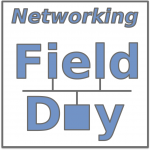Device Naming Conventions – What’s in a Name
Choosing a device hostname seems trivial to say the least. However, from multiple design meetings, this is a topic that tends to drag on. Everyone has a preference, and opinion or just set in the...[[ Summary content only, you can read everything now, just visit the site for full story ]]
BGP routing incidents in 2014, malicious or not?
Over the last year we have seen and written about numerous BGP routing incidents that looked out of the ordinary, straight-up suspicious or were just configuration mistakes. In this blog post we will highlight a few of them and look at the impact and cause of each of the observed incidents and try to determine if there was any malicious intent.
I presented the same data last week at NANOG 63, in San Antonio, a recording of this presentation can be found below:
BGP hijacking for monetary gain.
 We have all heard of Bitcoin, it’s been in the news quite a bit and chances are that some of you are mining Bitcoins right now. There are now computing devices optimized for Bitcoin mining and even dedicated Bitcoin mining data centers. In addition to the dedicated data centers, many Bitcoin miners use cloud compute instances from Amazon, OVH, Digital Ocean, etc. So it’s obvious that there is a lot of money spent on Bitcoin mining & trading; and as such there is also an opportunity to make a quick buck.
We have all heard of Bitcoin, it’s been in the news quite a bit and chances are that some of you are mining Bitcoins right now. There are now computing devices optimized for Bitcoin mining and even dedicated Bitcoin mining data centers. In addition to the dedicated data centers, many Bitcoin miners use cloud compute instances from Amazon, OVH, Digital Ocean, etc. So it’s obvious that there is a lot of money spent on Bitcoin mining & trading; and as such there is also an opportunity to make a quick buck.
This summer we blogged about a series of BGP hijacks where an attacker cleverly misused the Bitcoin stratum protocol. By Continue reading
Overlay Networking as a Method to Scale Flow Networking and Handling
Overlay Networking and Coarse Flow Table are two ways to scale up the flow networking for SDN.
The post Overlay Networking as a Method to Scale Flow Networking and Handling appeared first on EtherealMind.
The Secrets to Drawing Effective Network Diagrams
by Kevin Dooley, originally published on the Auvik blog Good network diagrams aren’t hard to make, but I find them distressinglyA Neutral ‘Net?
This week I’m going to step off the beaten path for a moment and talk about ‘net neutrality. It appears we are about to enter a new phase in the life of the Internet — at least in the United States — as the FCC is out and about implying we should expect a ruling on Title II regulation of the ‘net within the United States in the near future. What the FCC’s chairman has said is —
- The Internet would be reclassified as a Title II communication service, which means the portions within the United States would fall under the same regulations as telephone and television service.
- “comma, but…” The ‘net infrastructure in the United States won’t be subject to all the rules of Title II regulation.
- Specifically mentioned is the last mile, “there will be no rate regulation, no tariffs, no last-mile unbundling.”
A lot of digital ink has been spilled over how the proposed regulations will impact investment — for instance, AT&T has made a somewhat veiled threat that if the regulations don’t go the way they’d like to see them go, there will be no further investment in last mile broadband throughout the US (as Continue reading
Software Defined Reality – NFD9 Redux

I’ve just got back from Networking Field Day 9 (NFD9) and my head is buzzing after a busy week of presentations. I posted a preview of NFD9 so it seems only fair to give a quick wrap up of the week’s themes and presentations as I saw it.
My NFD9
After some time spent thinking on the flights back home, I came to the conclusion that there were two themes that were recurring this week.
The dominating theme for me was, at last, seeing the magic rainbow-expelling problem-solving unicorn that is Software Defined Networking – SDN – and all its inherent paradigm-shifting magic, turned into products that actually seem real, and are starting to deal with some of the issues that were flagged up when SDN was first being described. It’s relatively easy to SDN-wash a product, but making it something from which a user can actually benefit, well, that’s something else.
The second theme was that many of the products looked to the concept of detecting or fixing problems before the users were aware of them, whether as an alert from a monitoring system, or a network that automatically self-heals or otherwise avoids problem areas.
SDN == Programming
Don’t Continue reading
Tech Notes: Audio Ping Response From The Terminal / CLI
The following command line will use the Text to Speech converter in *nix to say the word "pingtastic" every time a successful icmp response message is received using the ping command.
The post Tech Notes: Audio Ping Response From The Terminal / CLI appeared first on EtherealMind.
IP FRR and Micro-loops Part 2
This is a continuation from Part 1 Remote LFA At this point we already know that simple LFA doesn’t always provide full coverage and its very topology dependent. Reason is simple i.e.in many cases backup next hop best path goes through the router calculating the backup next hop. This problem can be solved if we […]
Author information
The post IP FRR and Micro-loops Part 2 appeared first on Packet Pushers Podcast and was written by Diptanshu Singh.